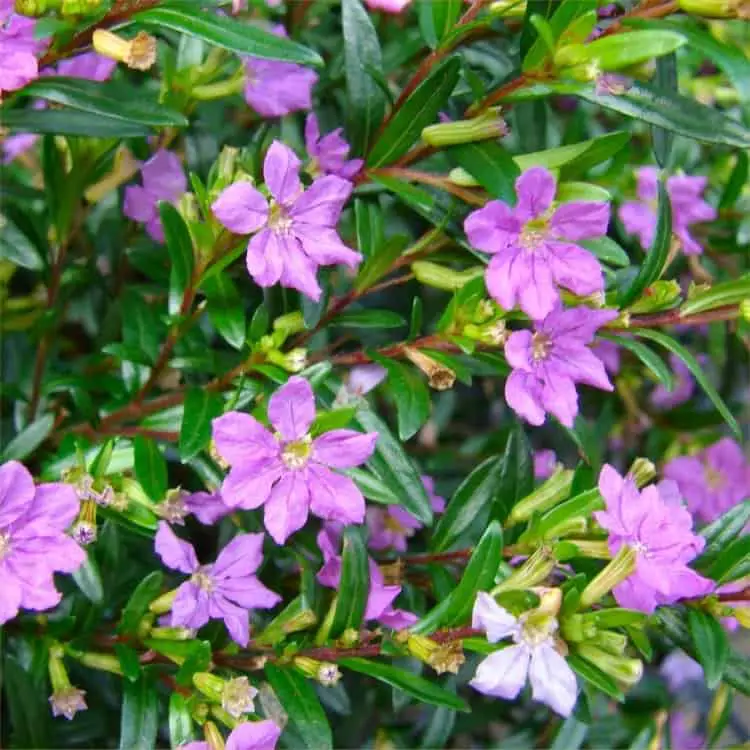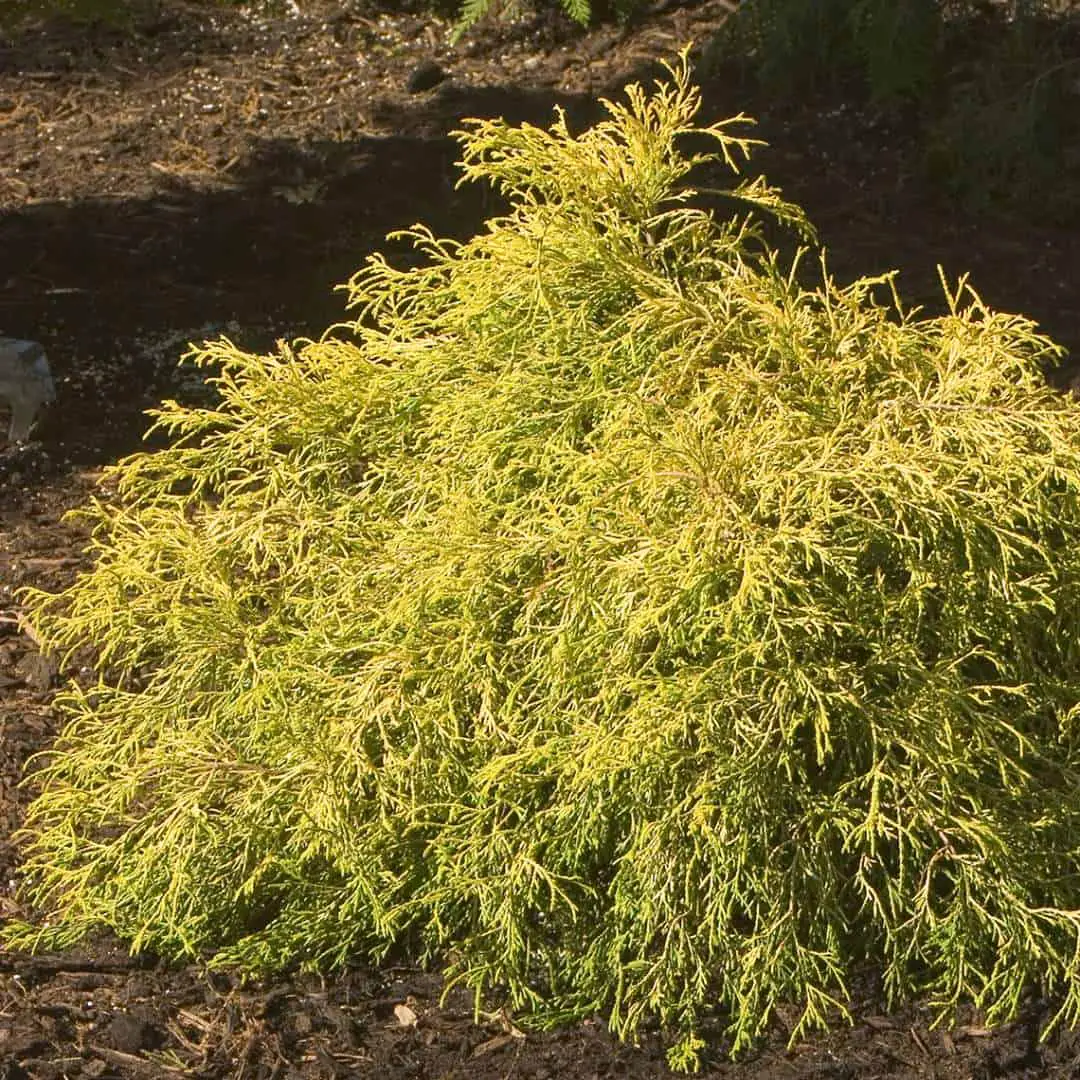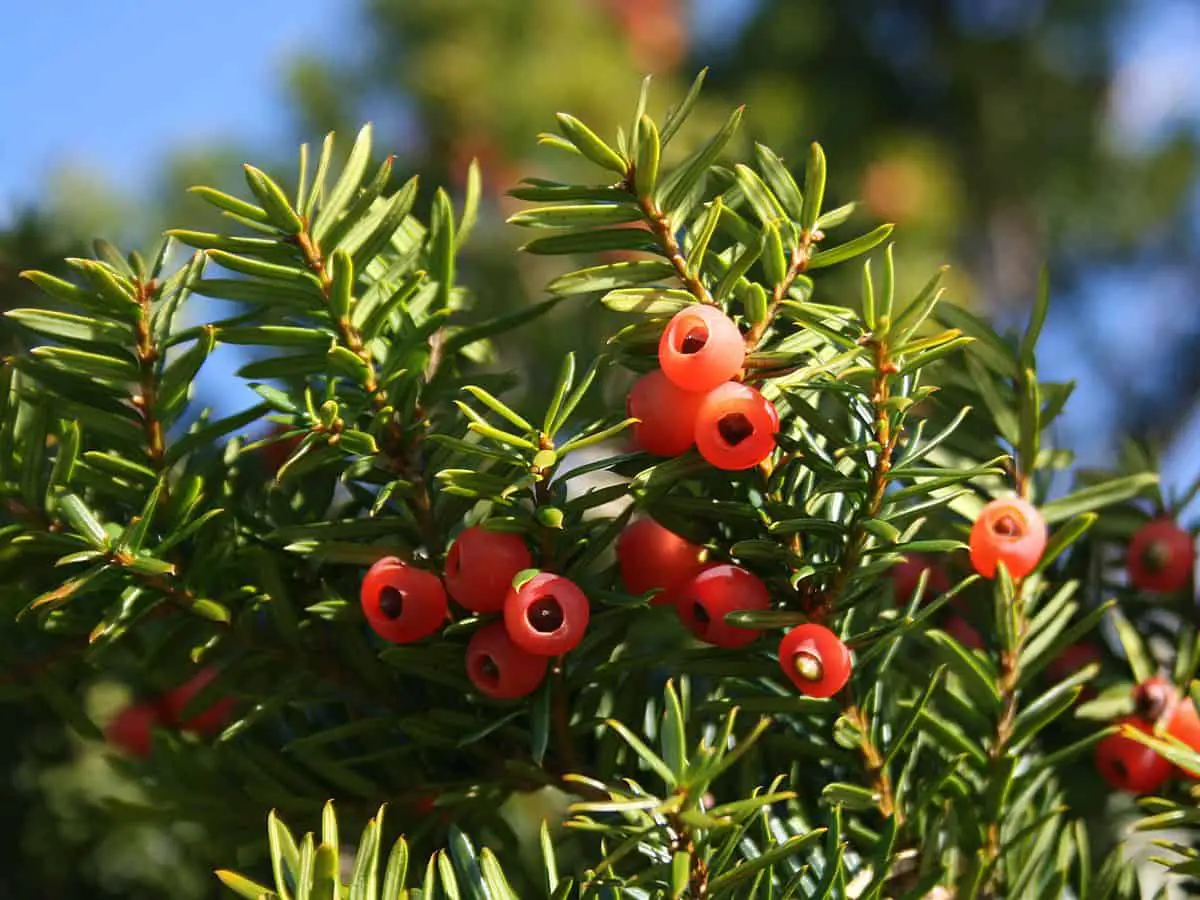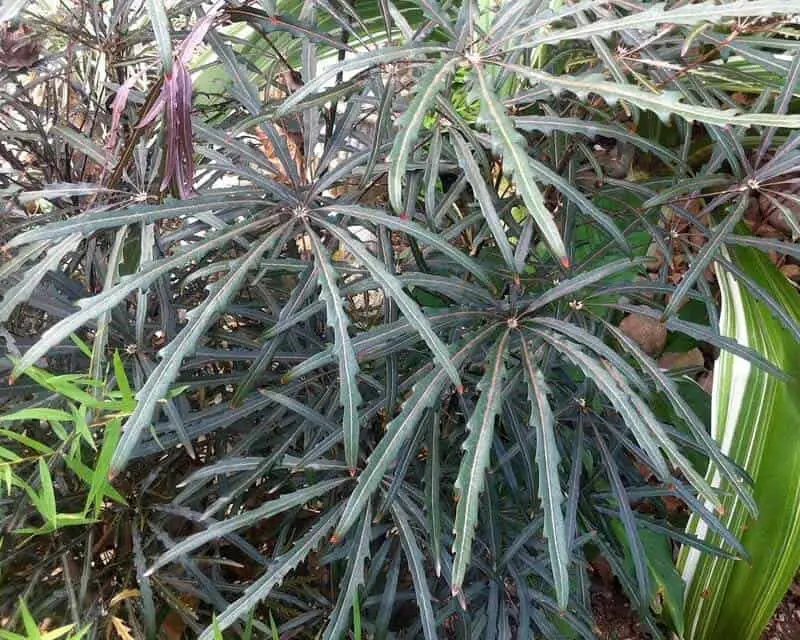Almond trees are relatively popular because of their tall, beautiful body and pink-white flowers growing on it. It blesses your garden with beautiful scenery if you decide to plant it.
- Whatever There is to Know About Almonds’ Origin
- Almonds’ Significance in Culture of History and Today’s
- Different Varieties of Almonds
- Conditions – Where do almond trees grow
- How Would You Start Plantation of Almond Tree?
- Propagation of Almond Tree Blossom
- Plant propagation refers to a process in which you grow a new plant – almond, in this case – from a variety of sources. These sources include seeds, cutting, and other plants – but all related to the parent plant. Plant propagation is also called natural or human-made dispersal of plant seeds. There are two ways or methods – that we have mentioned below – to go through plant propagation.
- 1. Propagation from the Fresh Nut
- 2. Propagation by Budding
- Pruning of Almond Tree
- What Type of Diseases can Harm the Tree?
- How to Carefully Harvest Almonds
- Benefits of Almonds – If you grow them right!
- Conclusion
Almonds are a popular nut and have been in use as an ingredient for a very long time.
Alone or mixed, almond (biologically known as Prunus Dolcis) proved itself a reliable, tasteful confectionery ingredient. Almond milk is used in a lot of delicious recipes. At the same time, almond-coated sweets are a significant part of tradition around the globe. Even if someone isn’t using almond as an ingredient, it can be enjoyed solely as just a nut snack.
Moreover, according to scientific research, almonds have the tendency to elevate the levels of Ach acetylcholine – a neurotransmitter in the brain – that enhances the memory of a consumer and is proved to be a significant aid in fighting against Alzheimer’s disease. Considering this, it won’t be wrong to say that almond is also a brilliant medicine.

Almonds are filled with nutrition and have many health benefits (which we will discuss in detail). Apart from almond’s brain-boosting powers, it has brilliant cosmetic properties and wound-healing characteristics. In short, if you plant an almond tree in your garden – which we suggest you do – you will not only have diverse apparel, but also a benefit-hub.
Almond tree blossoms stand up to ten to fifteen feet tall when fully grown. The tree really stands out to its audience with its flowery outlook in the springtime. You can see this outcome in almond tree pictures – it is beautiful. As much as we love to possess beautiful things, we have to care for them – intensive and sensitive.
It is a massive responsibility for planting, growing, and taking care of an almond tree. Nothing you can’t do, but it is still a rough-and-tough job – though, at the end of this article, you will be a maestro of almond trees! And to become a knower, we will start from an in-depth study of almond trees, bringing you up to the point where having a tree in your backyard will be easy as cake.
Whatever There is to Know About Almonds’ Origin
Almonds’ history is as old as the Bible. Some sources say that almonds have been in cultivation since 4,000 BC. Almonds were a prized ingredient for Egyptian pharaohs, and they were a tradition-holder for ancient Romans.
Exactly where almonds were born – it is unknown. We could gather with a bit of source that they ought to have been born in the regions of China and Central Asia – the accurate ancestry is, unfortunately, anonymous.
History tells us that explorers were sustaining on almonds while traveling the Silk Road – between the Mediterranean and Asia. And that was how almonds started flourishing in Mediterranean regions – especially Italy and Spain.
Then from Spain, almond was brought to California – not before the 18th century. However, the cold, wet, and coastal Californian weather wasn’t up to the mark for almonds to grow appropriately.
Research in the latest growing technologies and cross-breeding methods was developed by the 1870s – and that was when almonds started to get used to California’s environment.
It is because of these researches that now we can have different prominent almond varieties.
History and culture both tell us that almonds have a widespread religious and cultural importance. Almond has been a prominent ingredient of remedies, medicines, and aid-potions since the old times.
In some parts of the world, almond is still considered a ‘sacred’ nut. Nonetheless, the delicacies shout at us how delicious almonds really are.
Almonds have always been a part of traditions and blessedness. If we look back several decades, we find almonds having a prominent image as a luxurious delicacy.
Almonds’ Significance in Culture of History and Today’s
As we discussed above, Romans gave almonds a higher rank as a food ingredient. It was considered a symbol of fertility given to the newlyweds as a gift and a blessing.
In the 21st century, some Americans still consider sugared almonds a symbol of health, happiness, popularity, romance, and fortune to be given out at weddings.
In some parts of Sweden, people hide almonds in cinnamon-flavored rice puddings at Christmas evenings as a lucky charm for the upcoming year to those who find them.
Although these researches – or folklores – do not contribute to how almonds are cultivated, their purpose is to highlight how important almond’s cultivation is considered throughout the world for centuries.
So when you are growing them, you will know how much intensive care they require and how blessed feelings they are about to bring upon you – this is not even a stretch!
Different Varieties of Almonds
To our surprise, almonds have 30 different varieties – and these are just the ones that grow commercially. Like mangoes, these varieties have different properties, sizes, growth conditions, and sometimes taste.
Farmers who grow almonds on a commercial scale usually grow multiple varieties in the same orchard – because they have better intensive care resources.
1. Nonpareil
One of the most popular varieties of almonds is nonpareil. It is mostly regarded as the prettiest almond. Nonpareil generates the most significant turnover for the farmer. But not everyone can learn to organically care for nonpareils, so they are pollinated.
2. Carmel
Carmel, a pollinator for the variety of nonpareil, is mostly used as an ingredient in bakery or confectionery recipes. Carmel has a very softshell, and its skin is wrinkly. Carmel is harvested later than nonpareil. And for the home-grown variety, it is highly recommended.
3. Monterey
Monterey is also a brilliant pollinator – and it is massive! Monterey is a narrow almond with a plain, smooth surface.
4. Sonora
Like Carmel, Sonora has a soft shell and is recognized due to its long, narrow shape and pale skin. Fun fact: Sonora is a large variety of almonds.
These varieties are some of the most famous and common ones. They can be planted and cared for in your garden – but not very quickly. They are as much needy and hard to care for – except for Carmel – as they are good. But for the best, there has to be struggling.
For the backyard almond tree, our top suggestions would be Carmel, Hall’s Hardy, Mission, and All-In-One.
It is recommended that you buy a sweet, delicious almond to plant – it is more of a tip than a requirement if you are planning to eat the product you are growing. Because bitter almond tree fruit, typically ornamental, is also planted for just the aesthetic of it.
Conditions – Where do almond trees grow
Almonds, being intensive crops, are really picky about their growing conditions. That doesn’t mean that you can’t grow it if you do not have the conditions, but you have to learn how to improvise. And that makes a job real tight – but it’s worth it.
It is recommended that you plant your almond tree in fall. By doing that, root development will be speeded up before winter comes. Because almond trees usually take a lot of time to develop their roots.
Though, if you do not have a choice but to plant in spring, summer, or winter, you must avoid the cruel heat waves of summer, frozen frenzy of winters, and watering is a must in peak summers.
Below are the essential conditions – or requirements – on which your almonds will thrive.
1. Soil
Almonds should be kept away from wet soils and frost. These are the problems that hinge the growth of flowery early-almonds.
Although you can plant an almond tree in the shade – it will tolerate that. If the tree is planted directly under the sunlight, it will catch a noticeably faster growth. So when you are opting for soil, make sure the soil is coming into the view of our precious sun!
As for the soil quality, almond trees prefer well-drained soils. Not watery, not moist, but well-drained of water, or you can say: dry. But that is not what brings perfection. For the nut tree to grow healthy and beautiful, plant it in deep, loamy, fertile soils.
The almond won’t tolerate any other kind of soil – especially not the inferior kind. Imagine you choose perfect-quality recommended soil, but you can still make a mistake of overwatering. The last thing your tree would want is a poorly-drained, wet soil. So, make sure that soil has nothing as close as water on it.
2. Weather
An Almond tree requires dry and hot conditions. Almond trees thrive best in long summers when the weather remains hot, dry, and sunny – that’s the entire growing season. With that being said, cold weather is also an essential factor during almonds’ growth.
You will need a certain cold too in the almond tree zone– around 200 to 400 hours per year, with the temperature being less than 45˚ Fahrenheit or 7˚ Celsius. With that amount of cold, the dormancy of the almonds’ buds will successfully be broken.
It is evident that all these weather conditions are necessary; this is why almonds cannot grow well on tropical lands – or tropical climates. Almond tree zones love the sun. When the sun is out, they’ll sprout better than ever.
3. Rainfall, Irrigation, and Watering
Furthermore, rainfall is as essential to the almonds as sunlight and dry soil. To be approximate – and productive – almond trees require rainfall – or irrigation – to produce excellent yields. Now – it is said that soil shouldn’t be wet. But that doesn’t mean “no water at all.” That merely means “no stagnant water.”
As for partial irrigation, the almonds crave it. But when we are not talking about artificial means of watering and hoping for ample rainfall, it should be noted that rainfall has to be around 500 to 600 millimeters annually. That rounds up 20 to 25 inches annually.
Rainfall or irrigation helps in good yielding as well as well-filled nuts. But if you are growing a tree right down in your backyard, you might get worried about a proper irrigation system – or rainfall, because who can meddle with nature? Let me calm you down here, as almond trees also tend to survive in less water.
The rainfall or irrigation just increases the quality of your production, doesn’t stop it. So, if there is no water, you’re still good.
Although it is said that almond trees can survive with little-to-none water, it is best if you water your tree – anyways. To be fair, almonds do like a little extra water over the course of their thriving period. As for watering, almonds are fond of drip irrigation. Drip irrigation, is the best method, works in a way where almonds benefit from extra watering during early spring, in summer, and during the first few months of autumn.
Almonds need a helping hand right from the beginning of their thriving period. It means that if the plant starts completely dry, the production might decrease significantly. So during the first seasons of the almond growth, it is essential not to leave them to dry out, a little bit of extra water – as drip irrigation – might do well for them.
With that being said, it is, however, important not to water almonds during the harvesting period. As the commercial growth – the time close to harvesting – leans closer, irrigation should be stopped – 3 to 4 days before harvesting.
This watering policy of almond trees makes it more of a guessing game than statistical. You would have to use your experience – till then – to maintain the right balance between dryness and watering that can achieve a perfect harvest.
Although they thrive in a semi-arid climate, almond trees usually do not self-pollinate. Cross-pollination – with a second recommended variety – is required for fine production of fruit.
How Would You Start Plantation of Almond Tree?
1. Distance
When it comes to trees, the intense care from the very start is necessary to sustain a better future. Almond trees prefer to stand at least 4 to 6 meters apart from each other – that is the sustainable distance.
2. Roots
It is necessary that the roots of almonds should be dosed with water before planting. Yes – almonds prefer dry soil – but roots? They should be soaked wet beforehand to have a good start.
It is very important in almond trees to be aware of the concept of root tampering. Root tampering can be defined as an intentional or unintentional process of trimming, cutting, and forcing the root into the hole, which is not actually big enough to accommodate it. Root tampering is terrible for any tree, but as almonds are a sensitive crop, it is worse.
Therefore, you should dig a deep and wide hole that can comfortably accommodate root without the need for tampering. The root system also includes the taproot – so you have to give attention to space, leaving it enough for the tap root so it won’t bend out of shape.
3. The Ground Hole
The hole, in the first place, should be big enough. Apart from taproots, the rest of the roots are also sensitive. Therefore, they require the same amount of care and nurture. These roots must be spread out carefully to prevent matting.
Roots of the tree should be planted with the same depth as from where you bought them – it will keep them environmentally-friendly.
4. Soil Around the Root
As for the soil, it has to be compressed around the root – the hole in the ground shouldn’t be hollow. The hole has to be filled with soil and roots, give your new-born at least two buckets of water. It will help the roots settle in the soil, and it will kick-off with a better start.
Now that you have reached your starting point, it is accepted that you can also give your little tree with a precise boost of fertilizer. But fertilizer, at this point, will merely work as an icing on the cake. The fertilizer will work best if you wait till spring – that is if you are planting in the fall.
Propagation of Almond Tree Blossom
Plant propagation refers to a process in which you grow a new plant – almond, in this case – from a variety of sources. These sources include seeds, cutting, and other plants – but all related to the parent plant. Plant propagation is also called natural or human-made dispersal of plant seeds. There are two ways or methods – that we have mentioned below – to go through plant propagation.
1. Propagation from the Fresh Nut
There is no problem in trying to grow the backyard almond tree with your own seeds. But keep in mind that it will take much longer to finally bear the nut. It won’t be as qualified as to its parents – you are probably aware of that if you have already decided to grow a backyard-project almond tree.
Propagating the plant from the nut is an easy and plausible way. Finding fresh nuts is the first step to take – not roasted, but fresh! When you finally have fresh nuts, leave them in water for around 48 hours to soak.
After that, place them on a wet paper towel – in a plastic bag – and leave them on the refrigerator. In about 3 to 4 weeks, the refrigerator will do its magic. The plant will start noticeably sprouting.
It indicates that almonds are ready for a nice, soiled pot. Arrange a well-drained soil-mix – a mixture of sand and compost – and place directly in the sunlight. Windowsill is a perfect place – nice, warm, and lightened.
There is one essential thing about the almond plant to keep in mind: keep it moist. Moist means well-drained, wet-like, never soggy. After the plant has reached up to the 6 inches, it is time for you to transfer them into the bigger pot.
2. Propagation by Budding
Similar to other nut trees, the Budding process is the perfect way to propagate almonds. Budding is by far the most effortless process to propagate almond trees; it is also the most effective. It makes sure that a new plant grows while remaining true to its parent.
In budding, a rootstock of peach or the more resilient, bitter variety of almond protects the tree and roots from soil-borne diseases. Then the branch that bears fruit or nut is grafted onto the rootstock, making the tree more resilient.
Using grafted almond tree fruit to grow trees makes the trees resilient and makes the tree much faster than from seeds. So, if you have a peach rootstock, it tends to be more productive than those originally grafted with almond rootstocks. Roots stocks can be obtained from almond trees for sale. Yes – even in the local nurseries, almond trees for sale come at affordable prices.
It doesn’t end here; there is a further complication with almond trees. You will have to have at least two different, but compatible, varieties to make the cross-pollination happen.
Pruning of Almond Tree
Pruning is a process that involves shaping the tree for the future, and thus, making it more productive. At different stages of a tree’s life, pruning serves different purposes.
When trees are young, pruning determines what shape they will take in the future; therefore, their future productivity level, and the quality of the nuts. The correct way of pruning is necessary to ensure the perfect harvest.
Almonds are usually pruned into a vase-type-shape with 3 or 4 first main branches – which gives place to countless branch webs and flowers. It allows an easy way to harvest as well. If done right, this ‘vase’ shape turns out to be making the tree more productive and definitely increases its lifespan.
What we discussed until now was about initial pruning. Pruning after maturity is, however, a little different. It is more about keeping the shape of the tree maintained that was established in the early stages of tree growth.
Pruning after maturity totally renews the tree and encourages it to produce more. According to gardening specialists, around 20% of the older tree’s canopy should be pruned annually.
Pruning must be done with clean and disinfected tools and cutters. The poor quality of pruning often causes a tree disease named crown gall. So one must make sure that tools, time, and working techniques are up to the level of professionalism; otherwise, trees might get wasted, which will result in loss of all efforts.
What Type of Diseases can Harm the Tree?
Fruit or nuts are nature’s blessing. One hint of anything being organic is that it can die easily. Similarly, if you are planting almonds, which are already very sensitive, you have to keep a close eye on its health.
When diseases are ignored, they can spread themselves and kill the tree within days.
When almonds catch the disease, it doesn’t take much time before it is spread around the tree and waste the product.
Neglect and overlook to the tree and disease symptoms might later cause greater destruction. Therefore, one must always be sure that their sensitive almonds are safe and thriving.
There are a number of diseases that catch the trees – and almond trees are not safe from them.
1. Verticillium Wilt
The most common problem is soil-borne diseases. Such as fungal-disease Verticillium wilt, these diseases do everything they can to halt the tree’s growth – doing enormous economic damage for commercial growers and mental distress.
Verticillium wilt, particularly, can be avoided by firm rock root, preferably of bitter almond root or peach rootstock. Overwatering is also a factor that allows this disease to thrive in. So, over-irrigation is out of the option.
These fungal infections can also cause root rot, destroying all the effort you put into your tree.
2. Crown Gall
Apart from these, there is a bacterial disease called crown gall. Crown gall manages to sneak into the tree via cuts and damages.
So, treat your tree very carefully, as a child. Even slight damage can cause drastic loss. Crown gall not only damages the health of the tree beyond repair but also creates an unappealing look.
Moreover, it can be dangerous and infectious for you and your family to stick around the tree if it is infected with crown gall. All precautionary measures should be taken to keep the crown gall away from your tree. While pruning, branches must be cut with clean, disinfected equipment – professionally.
3. Mites
Mites can also irritate the tree and damage its leaves. Mites work in a way that they do not feed on the tree. Still, they irritate the beautiful tree so much by a constant buzzing that eventually, the tree loses its patience and starts taking stress, resulting in falling and dying of leaves and fruit.
You can use oil sprays and mite-control sprays on trees – when dormant. Some pesticides are also available in the market that comes in handy when struggling with mites.
How to Carefully Harvest Almonds
Harvesting is one of the final stages of your mission – and it is enjoyable and exciting. You get to, finally, reap what you sowed.
Almonds, when ripened, are safely wrapped inside their hard shells – or soft, in some cases. All it really takes it shaking a tree – hardly – so the nuts will fall on the ground from where you can collect them.
The question is: how would you know it’s time to shake? That is, again, a guessing game. But you can win it if you pay close attention. To know if your almonds are ripened for harvesting – or shaking – is to check the hulls.
If the hulls on the trees are starting to split open, it indicates that almonds want to come out. It often happens from late summer through to the month of October in the United States.
Another tip that can help you harvest edible nuts is that you should wait about three-quarters of the nuts to have started to split open out of their shells. That indicates that it is the perfect time to harvest them.
After harvesting, nuts must be dried out before consumption. It can be done by leaving them on the ground for a few days; sunlight will dry them off fine – but there should be NO RISK OF RAIN – it would make the almonds worse. Another way to dry off the almonds is to store them safely – somewhere cool and dry.
A tip: draw a sheet on the ground, so when the nuts fall on the ground, they can be easily gathered
Benefits of Almonds – If you grow them right!
Being a sacred, historical nut, there are multiple benefits of almond. Growing an almond tree in your garden or backyard will give you various advantages. Let’s look into it.
1. Almonds have a high ratio of oil – which can be refined for homemade remedies.
2. Protein and carbohydrates are specialties of almonds. That means having them regularly coming to your dining table means health-filled meals.
3. Almond is a magic-tool for clearing skin tone. Having almonds in your body, one way or another really provides cosmetic benefits.
4. Almonds are a perfect reducer of dehydration – thus, better health and appearance.
5. Skin anti-inflammation and wound-healing properties are found in almonds; thus, it can be a great gradual medicine.
6. Almonds are very much appreciated in dermatology because almond tree buds are an excellent skin tonic.
7. Almond tree buds also provide anti-sclerosis effects for elderly persons – which gains them applause in gemmotherapy.
8. If you have pets, almonds are golden for you. Animals also gain benefits from almonds. Vets have been using this nut on the herds because of its laxative characteristics.
Conclusion
Now that you know how to plant, grow, and take care of the almond tree, you have already taken a start. Do you know what the next and final step is? Start working! That’s right, but the knowledge that you have just gained into physical practice and initiate the backyard project.
To be honest, almonds are a really good choice for your backyard. It not only releases a commercial value of your house but gives a measured increase to the appearance – making it more appealing than ever before. And not to mention, almonds are a far better choice than other nuts and fruits if you are really considering planting a tree.
As it is discussed before, almonds are involved in all the continental delicacies. More than that, it is a brilliant ingredient for remedies and homemade medicines. In short, you might not think now, but you will have plenty to do with your almonds once you harvest them.




